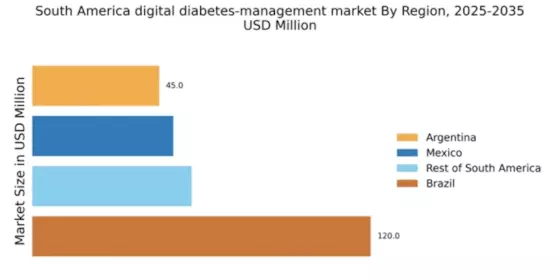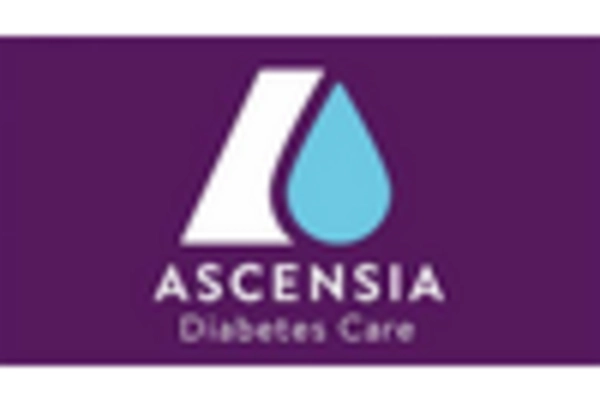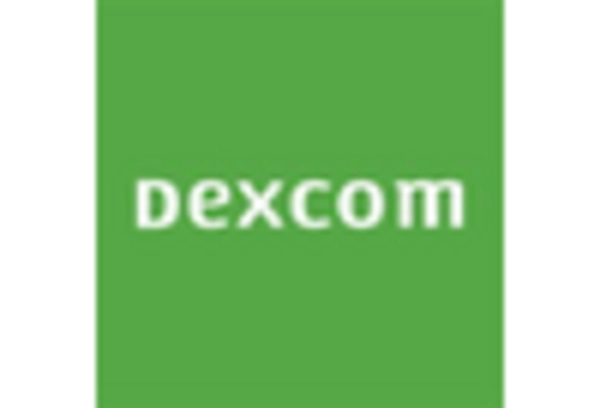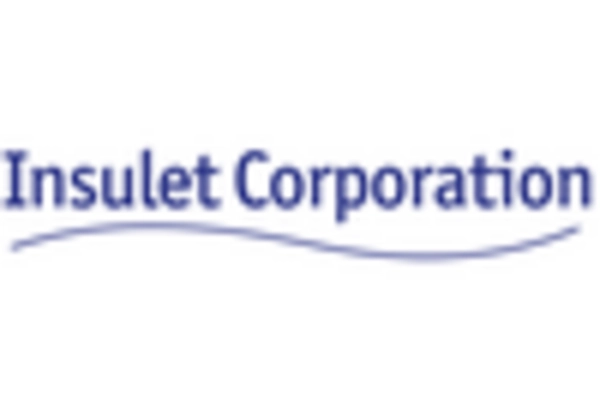Rising Prevalence of Diabetes
The increasing prevalence of diabetes in South America is a primary driver for the digital diabetes-management market. According to health statistics, approximately 10% of the adult population in the region is affected by diabetes, with numbers expected to rise. This growing patient base necessitates innovative management solutions, leading to a surge in demand for digital tools. The digital diabetes-management market is responding by developing applications and devices that facilitate better monitoring and control of blood glucose levels. As more individuals seek effective management strategies, the market is likely to expand, with projections indicating a potential growth rate of 15% annually over the next five years.
Government Initiatives and Support
Government initiatives aimed at combating diabetes are significantly influencing the digital diabetes-management market in South America. Various countries are implementing policies to promote health technology adoption, including subsidies for digital health solutions. For instance, Brazil has launched programs to integrate telemedicine into diabetes care, enhancing accessibility for patients. Such support not only encourages healthcare providers to adopt digital tools but also fosters public awareness about diabetes management. The digital diabetes-management market is likely to benefit from these initiatives, as they create a conducive environment for innovation and investment, potentially increasing market size by 20% in the coming years.
Growing Health Awareness and Education
There is a notable increase in health awareness and education regarding diabetes management in South America, which is driving the digital diabetes-management market. Campaigns aimed at educating the public about diabetes risks and management strategies are gaining traction. As individuals become more informed, they are more likely to seek out digital solutions for managing their condition. The digital diabetes-management market is capitalizing on this trend by offering educational resources and tools that empower patients. This shift in consumer behavior could lead to a market growth of approximately 12% over the next few years.
Technological Advancements in Wearable Devices
Technological advancements in wearable devices are transforming the digital diabetes-management market in South America. Innovations in sensors and connectivity have led to the development of sophisticated glucose monitoring systems that provide real-time data to users. These devices are becoming increasingly popular among patients, as they offer convenience and improved health outcomes. The digital diabetes-management market is witnessing a rise in the adoption of wearables, with estimates suggesting that the market for such devices could reach $1 billion by 2026. This trend indicates a shift towards more personalized and proactive diabetes management solutions.
Rising Demand for Personalized Healthcare Solutions
The demand for personalized healthcare solutions is reshaping the digital diabetes-management market in South America. Patients increasingly prefer tailored management plans that cater to their specific needs and lifestyles. This trend is prompting developers to create customizable digital tools that allow users to set personal goals and track their progress. The digital diabetes-management market is responding by integrating features that enhance user experience and engagement. As personalization becomes a key focus, the market is expected to grow, with projections indicating a potential increase of 18% in user adoption rates by 2027.


















Leave a Comment